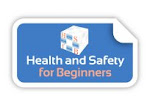If you had been away on another planet and had just come back and picked up a newspaper, or turned on the news, you would be forgiven for linking the above tragic list of outcomes to the nuclear incident - not least because most of the media publications are almost 100% on the nuclear story. Now, I really am not downplaying the nuclear event (I don't think you will find I have in the earlier posts if you read them carefully), but take a look at the list again and be clear that none of these were nuclear related.
So, accepting that this is not nuclear related - what is then? Well clearly the issue is down to the health effects of ionising radiation. I do not have the time (or energy this morning) to provide a fully checked (and peer reviewed) description of the science surrounding health effects of radiation. The problem is that I can pick and choose from a multitude of training materials, but that simply does not work when you have such a potentially diverse audience. So what follows is a quick brain dump of ideas and thoughts, mixed with some media files (which are probably too detailed for the majority but I have nothing better).
Critical persons exposed
It is first important to consider who is being exposed and how. There are broadly two groups of people: nuclear plant workers and members of the public (I include general emergency workers, relief workers and the media in the second group). Those most likely to be exposed are clearly the plant workers - they are nearer to the plant than anyone else.
Units of Dose
This is where things can get a bit complicated (well at least in a short article such as this). What I am going to do is first direct you to two YouTube videos that I have had produced. If you cannot get YouTube because you are at work (etc) then sorry - perhaps you can catch them later. Parts 1 and 2 on Radiation Dose are below. Take your time over this and perhaps watch a few times. Read more at www.ionactive.co.uk |

